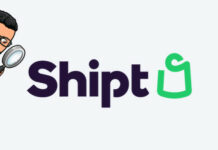In the wake of the Covid-19 pandemic, businesses all around the world are now grappling with the decision of whether or not to return to their offices. It’s a tough call to make, given how well remote working arrangements performed in the past two years. But for the companies considering making remote work a permanent part of their strategy, it’s not as simple as sticking with the status quo.
To make the shift successful in the long run, companies have to fully adapt their processes to an all-remote environment. And for many, the solution is to format their workflows according to one of the many well-established project management techniques. The question is — which one should they choose? To answer that, here’s an overview of three remote-friendly methods of project management, and the tech tools that support them best.
The Agile Methodology
The Agile method is a project management technique originally designed to help manage software development projects. But, it’s also used to run things like supply chains, manufacturing, customer support, and other collaborative processes. Agile projects call for work to be divided into stages. And within each stage, the team working on the project plans their work, executes it, and evaluates the outcome — repeating the process until the work’s done.
To apply the Agile method to a remote team, it’s necessary to use a collaboration platform built with Agile in mind. The good news is that there are dozens of them available geared toward every type of work imaginable. And there are also countless tools available for managers to stay on top of their remote agile teams, including options like employee monitoring software to measure the output of team members as they complete each stage of a project.
The Scrum Methodology
Although Scrum is technically a form of Agile project management, it’s unique enough to warrant its own entry. It’s broadly applicable to any kind of project that requires working closely with a client, or that has deliverables at various phases of the work. But it excels especially in situations where the client doesn’t have a clear idea of what they want at the outset. This is because Scrum is resilient to midstream changes and won’t crash and burn when new priorities emerge.
In a remote setting, platforms like Trello work well for Scrum projects. That’s because they bundle all of the needed communications and brainstorming tools together in one place. And there’s a wealth of online resources available to help managers with critical tasks like sprint planning, too. But businesses wishing to use the Scrum methodology should also be aware that they may need to send managers for some specific Scrum Master training if they want to get the most out of teams using it.
The Kanban Methodology
Sometimes considered the first true project management methodology, Kanban came into being in the 1940s. It was the brainchild of Taiichi Ohno, then an engineer working for Toyota in Japan. The Kanban methodology embraces a transparent management style using a single information source — called a Kanban board — where all of the moving parts of a project get tracked.
In effect, Kanban projects move tasks through three distinct phases — requested, in progress, and complete. In-progress tasks are subject to capacity limits, so the team can’t bite off more than it can chew. As with the other methods covered here, there are countless tools built to support Kanban. For remote teams, however, the best options are Kanban Tool and Kanbanize. Both are sleek, have just the right functions to manage a Kanban project (and nothing extraneous to distract team members), and can handle just about any kind of work required.
Ready to Work
By choosing a project management technique that suits the type of work it does, a business can get the most out of its remote teams. And the tech tools mentioned here all make great additions to their respective project management styles, increasing efficiency in all-remote settings. That’s an outcome that makes extending remote work for the foreseeable future not only possible — but desirable. And it should make the decision of whether or not to do so a real no-brainer for just about any business.



